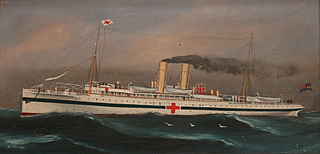Brighton is a seaside resort and part of the city of Brighton and Hove.

The Southern Railway (SR), sometimes shortened to 'Southern', was a British railway company established in the 1923 Grouping. It linked London with the Channel ports, South West England, South coast resorts and Kent. The railway was formed by the amalgamation of several smaller railway companies, the largest of which were the London and South Western Railway (LSWR), the London, Brighton and South Coast Railway (LB&SCR) and the South Eastern and Chatham Railway (SE&CR). The construction of what was to become the Southern Railway began in 1838 with the opening of the London and Southampton Railway, which was renamed the London & South Western Railway.

The London, Brighton and South Coast Railway was a railway company in the United Kingdom from 1846 to 1922. Its territory formed a rough triangle, with London at its apex, practically the whole coastline of Sussex as its base, and a large part of Surrey. It was bounded on its western side by the London and South Western Railway (L&SWR), which provided an alternative route to Portsmouth. On its eastern side the LB&SCR was bounded by the South Eastern Railway (SER)—later one component of the South Eastern and Chatham Railway (SE&CR)—which provided an alternative route to Bexhill, St Leonards-on-Sea, and Hastings. The LB&SCR had the most direct routes from London to the south coast seaside resorts of Brighton, Eastbourne, Worthing, Littlehampton and Bognor Regis, and to the ports of Newhaven and Shoreham-by-Sea. It served the inland towns and cities of Chichester, Horsham, East Grinstead and Lewes, and jointly served Croydon, Tunbridge Wells, Dorking and Guildford. At the London end was a complicated suburban and outer-suburban network of lines emanating from London Bridge and Victoria, and shared interests in two cross-London lines.

SS Robin is a 350 gross registered ton (GRT) steam coaster, a class of steamship designed for carrying bulk and general cargoes in coastal waters, and the oldest complete example in the world. One of a pair of coasters built in Bow Creek, London in 1890, the ship was built for British owners, but spent most of her long working life on the Spanish coast as Maria.

William Denny and Brothers Limited, often referred to simply as Denny, was a Scottish shipbuilding company.

SS Sussex was a cross-Channel passenger ferry, built in 1896 for the London, Brighton and South Coast Railway (LBSCR). After the LBSCR came to a co-operation agreement with the Compagnie des Chemins de Fer de l'État Français, she transferred to their fleet under a French flag. Sussex became the focus of an international incident when she was severely damaged by a torpedo from a German U-boat in 1916 and at least 50 passengers died. After the war she was repaired and sold to Greece in 1919, being renamed Aghia Sophia. Following a fire in 1921, the ship was scrapped.
George Forrester and Company was a British marine engine and locomotive manufacturer at Vauxhall Foundry in Liverpool, established by Scottish engineer George Forrester. The company opened in 1827 as iron founders and commenced building steam locomotives in 1834.
A number of steamships have been called SS Amsterdam, including:
Brittany was a 631 GRT passenger ferry built in 1910 for the London, Brighton and South Coast Railway. In 1912 she was sold to the London and South Western Railway, passing to the Southern Railway on 1 January 1923. She was renamed Aldershot in 1933. In 1937 she was sold to an Italian owner and renamed Hercules. On 24 November 1941, she was torpedoed and sunk by HMS Triumph.
Aldershot was the name of a number of steamships
Hercules was the name of a large number of steamships.
Duchess of Norfolk was a 381 GRT paddle steamer built in 1911 for the London, Brighton and South Coast Railway and London and South Western Railway, who operated a joint service to the Isle of Wight. She was requisitioned by the Royal Navy for use as minesweeper HMS Duchess of Norfolk during the First World War, returning to her owners after the war ended. She passed to the Southern Railway on 1 January 1923.

Brighton was a 1,384 GRT steamship which was built in 1903 for the London, Brighton and South Coast Railway and London and South Western Railway. She passed to the Southern Railway on 1 January 1923. In 1930, she was sold to W E Guinness and converted to a private yacht, Roussalka. She was wrecked at Killary Bay on 25 August 1933.
SS Brighton can refer to the following ships:

Dieppe was a steam passenger ferry that was built in 1905 for the London, Brighton and South Coast Railway. She was requisitioned during the First World War for use as a troopship and later as a hospital ship HMS Dieppe, returning to her owners postwar. She passed to the Southern Railway on 1 January 1923. In 1933 she was sold to W E Guinness and converted to a private diesel yacht, Rosaura. She was requisitioned in the Second World War for use as an armed boarding vessel, HMS Rosaura. She struck a mine and sank off Tobruk, Libya on 18 March 1941.
A number of steamships have carried the name Paris, after the French capital city.

David MacBrayne is a limited company owned by the Scottish Government. Formed in 1851 as the private shipping company David Hutcheson & Co. with three partners, David Hutcheson, Alexander Hutcheson and David MacBrayne, it passed in 1878 to David MacBrayne.
SS Victoria may refer to the following ships:
SS Normandy was a passenger vessel built for the London, Brighton and South Coast Railway in 1910.
Several vessels have been named Duchess of Buccleugh or Duchess of Buccleuch for one or another Duchess of Buccleuch:
This page is based on this
Wikipedia article Text is available under the
CC BY-SA 4.0 license; additional terms may apply.
Images, videos and audio are available under their respective licenses.







